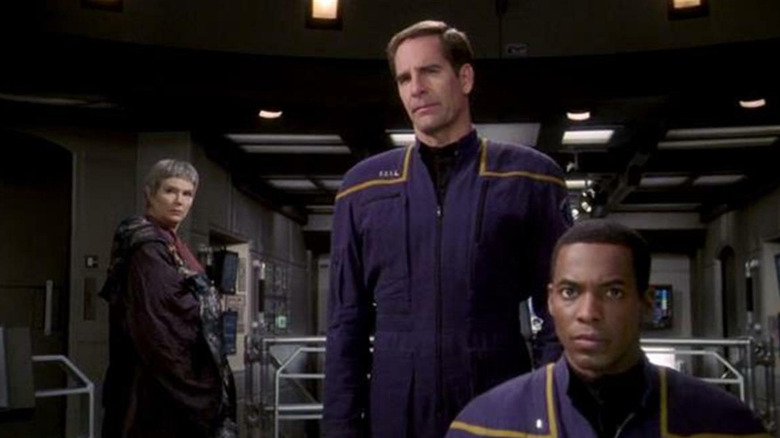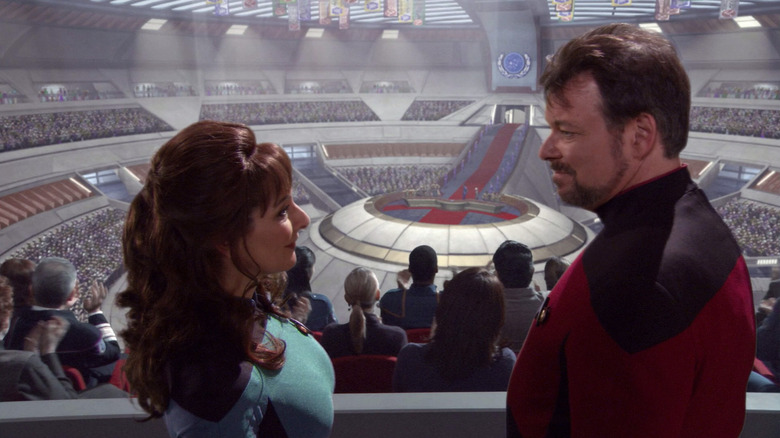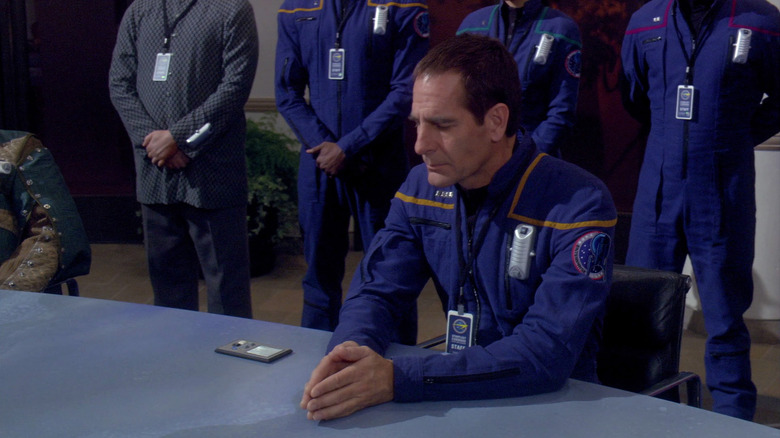
While the series has its fans, it’s hard not to refer to the 2001 series “Star Trek: Enterprise” as a vague disappointment. Starting in 1987, and lasting throughout the whole of the 1990s, “Star Trek” was riding high, enjoying immense popularity from “Star Trek: The Next Generation,” and debuting “Star Trek: Deep Space Nine” and “Star Trek: Voyager” in rapid succession. Several feature films were released in theaters, and merch sales were way up. It was a fine, fine time to be a Trekkie.
“Enterprise,” however, debuted two weeks after 9/11, and it seemed like no one was in the mood. The show’s creators seemed a little tired out, and a post-9/11 audience really wasn’t in the mood for a series about exploration, diplomacy, and making peace with your enemies. The three previous “Star Trek” shows lasted for seven seasons each. “Enterprise” was canceled after its fourth in 2005, officially bringing the glory days to an end.
The premise of “Enterprise,” to remind readers,” was intriguing. Set a century before the original “Star Trek,” “Enterprise” followed the adventures of the very first Starfleet vessel launched from Earth. There wasn’t a Prime Directive yet, nor were there shields, photon torpedoes, or — most importantly — a Federation. “Enterprise,” in being so stripped-down and scrappy, sought to regain a “wild west” vibe that had been lacking from the previous few “Star Trek” shows. Fans would argue that it was successful.
But, because the series was canceled after season four, some of the more ambitious plans were never fully realized. Show co-creator and onetime “Star Trek” head honcho Rick Berman spoke with StarTrek.com back in 2011, and he lamented the lost opportunities, including its inability to fulfil its one central goal: to depict the formation of the Federation.
Enterprise never got to tell a proper Federation origin story
Some of the world’s more passionate Trekkies will be able to tell you that “Enterprise” takes place in the mid-2150s, and also that the United Federation of Planets was founded in 2161. The Federation was founded by a quintet of species, respectively coming from Earth, Proxima Centauri, Vulcan, Tellar, and Andoria. Rick Berman likely set “Enterprise” when he did as to allow the events of the series to lead up to the Federation’s founding.
But, because the show was canceled after only four years, the Federation story couldn’t be told the way Berman, or his co-creator Brannon Braga, wanted. There wasn’t a definite plan for a Federation story, but it was always in the back of Berman’s mind. He said:
“We wanted to basically develop a show that, by the seventh season, would bring us to a logical and dramatic method of the creation of the Federation. It was something that [showrunner] Manny Coto and Brannon and I had not really spelled out specifically, but it was our goal that that’s where the sixth and seventh season were going to go.”
The finale of “Enterprise” did dramatize small pieces of the Federation’s founding, but in what many might say was a truncated, unsatisfying fashion. Instead of the crew of the U.S.S. Enterprise forming alliances and practicing diplomacy, the show decided to make the final episode of the series (called “These Are the Voyages…”) a centuries-after-the-fact holographic recreation, witnessed by William Riker (Jonathan Frakes) and Counselor Troi (Marina Sirtis) from “Star Trek: The Next Generation.”
Sadly, the show petered out in ratings before any such groundwork could be laid. Yes, there were scenes of the Federation treaties being signed, but seeing the “Enterprise” characters as mere holograms didn’t have the same impact.
Rick Berman had no time to plan for the end of Enterprise
The cancelation of “Enterprise” came as something of a surprise to Berman, Braga, and Coto. They were still writing “Enterprise” in a largely episodic structure (considered old-fashioned by 2005), and weren’t looking ahead to future seasons yet. As such, when word came down that the fourth season would be the last, they had to work quickly to write a satisfying finale. When asked what the show’s unmade fifth season might contain, Berman was at a loss. He said:
“We had no idea. We hadn’t gotten that far. We were probably shooting six or seven shows earlier at the time that we got canceled and we had not really decided what the season-four ending episode was going to be. It might have been a cliffhanger or it might not have, but we hadn’t made that decision before learning that the plug was being pulled.”
“Enterprise” wrestled with structure a lot. In the early 2000s, a lot of high-profile shows were shifting away from the syndication-friendly episodic model and toward a binge-friendly serialization model. Many shows were telling stories that took entire seasons to conclude, while others kept single story arcs continuing over many years. “Star Trek” previously thrived on the episodic model, and only started to spread toward serialization with “Deep Space Nine.” “Enterprise” pivoted to a longer-form serialized narrative with its third season, and then had several mini-arcs (of three or four episodes each) in its fourth season. The show had to evolve as it went.
This, sadly, may be what kept viewers away. It wasn’t ambitious enough for a serial model, and had already worn out its episodic one. Four years, it seems, was all “Enterprise” was fated to have.




Leave a Reply